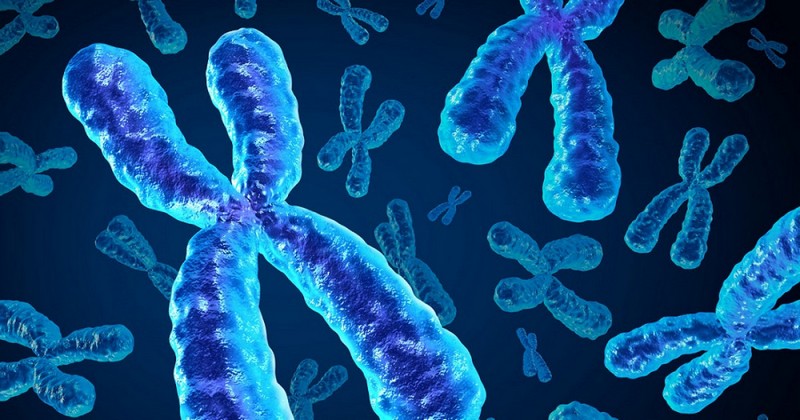Refsum’s disease (adult): diagnosis, symptoms, causes and treatment.

We explain all the characteristics of this rare hereditary disorder.
Adult Refsum disease is a rare hereditary disorder that causes the accumulation in the Blood of a fatty acid that we obtain from some foods and whose consequences result in lesions of varying degrees that affect sensory and motor functions, among others.
In this article we explain what Refsum's disease is and what are its causes.In this article we explain what is Refsum disease and what are its causes, how it can be diagnosed, what are its main clinical signs and symptoms, as well as the indicated treatment.
- Recommended article: "Top 10 genetic disorders and diseases".
Adult Refsum's disease: what is it and how does it occur?
Refsum's disease, named after the Norwegian neurologist Sigvald B. Refsum is a rare metabolic syndrome characterized by the accumulation of phytanic acid in the blood and tissues, including the brain. It belongs to the group of lipidoses, a group of inherited diseases that have in common the accumulation of harmful amounts of lipids (fats) in some cells of the body.
This hereditary disease is transmitted in an autosomal recessive pattern.that is, for a person to inherit the disorder, he or she must receive a copy of the genetic mutation from both parents. Refsum disease is caused by a deficiency of the enzyme peroxymal phytanol CoA hydroxylase (PAHX), caused by a mutation of the PAHX gene on chromosome 10.
Affected patients are unable to metabolize phytanic acid, a branched-chain saturated fatty acid found mainly in foods such as ruminant meat and dairy products, and to a lesser extent in fish. The accumulation of this compound causes lesions in the retina, brain and peripheral nervous system.
The prevalence of Refsum disease is 1 case per million population, and affects men and women equally.The prevalence of Refsum disease is 1 case per million population, and affects males and females equally, with no racial or gender predominance. The initial symptoms usually begin around 15 years of age, although they can also appear during childhood or in adulthood (between 30 and 40 years of age). The following are the main signs and symptoms of this disease.
Signs and symptoms
The first signs and symptoms of adult Refsum's disease appear between the end of the first decade of life and adulthood, and the person develops what is known as the classic triad of symptoms: retinitis pigmentosa, cerebellar ataxia, and distal predominant sensorimotor polyneuropathy..
Retinitis pigmentosa causes an abnormal accumulation of pigment in the retinal membranes, which in the long term triggers retinal degeneration due to chronic inflammation; cerebellar ataxia implies a lack or deficit in the coordination of muscle movements, mainly in the hands and legs; and sensory-motor polyneuropathy produces loss of sensation and paresthesias (tingling and numbness sensations) in the patient.
Beyond these three typical symptoms, in Refsum disease there may also be cranial nerve involvement, cardiac, dermatological and skeletal problems. At the sensory level, there may be anosmia (decrease or loss of smell), hearing loss, corneal opacities (causing loss of vision and photosensitivity) and skin alterations. Other clinical manifestations also present in the disease are cataracts, ichthyosis (the skin becomes dry and scaly) and anorexia.
Patients who are not treated or who are diagnosed late may have severe neurological damage and develop depressive disorders; in these cases, there is a high mortality rate. On the other hand, it is important for the patient to maintain a healthy diet, it is important for the patient to maintain a correct diet to attenuate neurological, ophthalmological and cardiac symptoms..
Diagnosis
The diagnosis of adult Refsum disease is made by determining the accumulation of high concentrations of phytanic acid in blood plasma and urine. Plasma long-chain fatty acid levels indicate metabolic defects and may serve as an indicator. In any case, a physical examination and biochemical evaluation is necessary, although the clinician should rely on typical signs and symptoms..
Histopathological diagnosis (study of the affected tissues) shows hyperkeratosis, hypergranulosis and acanthosis of the skin. The pathognomonic lesions are found in the basal and suprabasal cells of the epidermis, which show vacuoles of different sizes with evident lipid accumulation.
It is important to diagnose the disease as early as possible, as timely initiation of nutritional treatment can slow or delay many of its clinical manifestations.
Differential diagnoses include Usher syndrome I and II; individual enzyme defects in peroxisome fatty acid beta-oxidation; disorders with severe hypotonia; neonatal seizures; and liver dysfunction or leukodystrophy. In addition, adult Refsum disease should not be confused with the infantile variant (infantile Refsum disease).
Treatment
Nutritional treatment is usually indicated in Refsum disease.. As mentioned above, because phytanic acid is obtained exclusively from the diet, a strict diet with restriction of fats present in certain ruminant meats and fish (tuna, cod or haddock) can help prevent the progression of disease symptoms.
This type of treatment successfully resolves symptoms such as ichthyosis, sensory neuropathy and ataxia. Although the effects on the progression of others, such as retinitis pigmentosa, anosmia or hearing loss, seem more uncertain and these symptoms tend to persist.
An alternative procedure is plasmapheresis, a technique used in autoimmune diseases to purify the blood plasma; first the patient's blood is withdrawn, then the accumulation and excess phytanic acid is filtered out, and finally the patient is re-infiltrated with renewed blood plasma.
So far, no drugs capable of inducing enzymatic activity to promote the degradation of phytanic acid and reduce its concentration in the blood plasma have been found. research is currently continuing in the search for more effective treatments to combat this and other similar diseases..
Bibliographic references:
-
Castro, F., & del Socorro, Á. (2009). Clinical case: nutritional treatment of a genetic disorder called Refsum Syndrome. Perspectives in Human Nutrition, 11(2), 205-210.
-
Wanders, R. J., Waterham, H. R., & Leroy, B. P. (2015). Refsum disease. In GeneReviews®[Internet]. University of Washington, Seattle.
(Updated at Apr 14 / 2024)